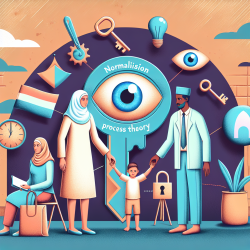Understanding the Impact of Environmental Inequities on Children's Health
As a passionate advocate for children's health, it's crucial to understand the significant impact environmental factors have on their well-being. A recent scoping review titled "Inequalities in Environmental Cancer Risk and Carcinogen Exposures" sheds light on the disparities in environmental exposures that may elevate cancer risks, particularly among disadvantaged communities. This review is a wake-up call for practitioners to delve deeper into how these inequities affect the populations they serve and to consider integrating this knowledge into their practice.
The Key Findings: Disparities in Environmental Exposures
The scoping review conducted by Larsen et al. (2023) reveals that neighborhoods with higher proportions of low-income residents, racialized individuals, or same-sex couples are disproportionately exposed to carcinogens and environments that may increase cancer risk. The study identified four main themes of inequitable exposures:
- Air pollution and hazardous substances
- Tobacco access
- Food access
- Other aspects of the built environment, such as greenspace and walkability
While air pollution remains the most studied area, the review emphasizes the need for more comprehensive research on other carcinogenic exposures and environments.
Implications for Practitioners: Data-Driven Approaches
For practitioners, especially those in speech-language pathology, understanding the broader environmental context can enhance the effectiveness of interventions. Here are some steps to consider:
- Incorporate Environmental Context: When assessing a child's health, consider environmental factors such as air quality and access to healthy foods, which may indirectly affect their development and learning.
- Advocate for Policy Change: Use data-driven insights to advocate for policies that address environmental inequities. This can lead to systemic changes that benefit all children, particularly those in marginalized communities.
- Collaborate with Multidisciplinary Teams: Work with public health professionals, urban planners, and policymakers to develop interventions that reduce environmental risks and promote healthier environments for children.
- Educate Families and Communities: Provide resources and education to families about the impact of environmental exposures and how they can advocate for safer environments.
Encouraging Further Research
The review highlights the need for more research to understand how various exposures intersect and contribute to health disparities. Practitioners can play a pivotal role in this by:
- Participating in Research Initiatives: Engage in or support research efforts that explore the links between environmental factors and health outcomes in children.
- Contributing to Data Collection: Collect and share data on environmental exposures and health outcomes in your practice to contribute to a broader understanding of these issues.
- Staying Informed: Keep abreast of the latest research and integrate new findings into your practice to ensure evidence-based interventions.
By taking these steps, practitioners can help mitigate the impact of environmental inequities on children's health and contribute to a more equitable and healthier future for all.
To read the original research paper, please follow this link: Inequalities in Environmental Cancer Risk and Carcinogen Exposures: A Scoping Review.










